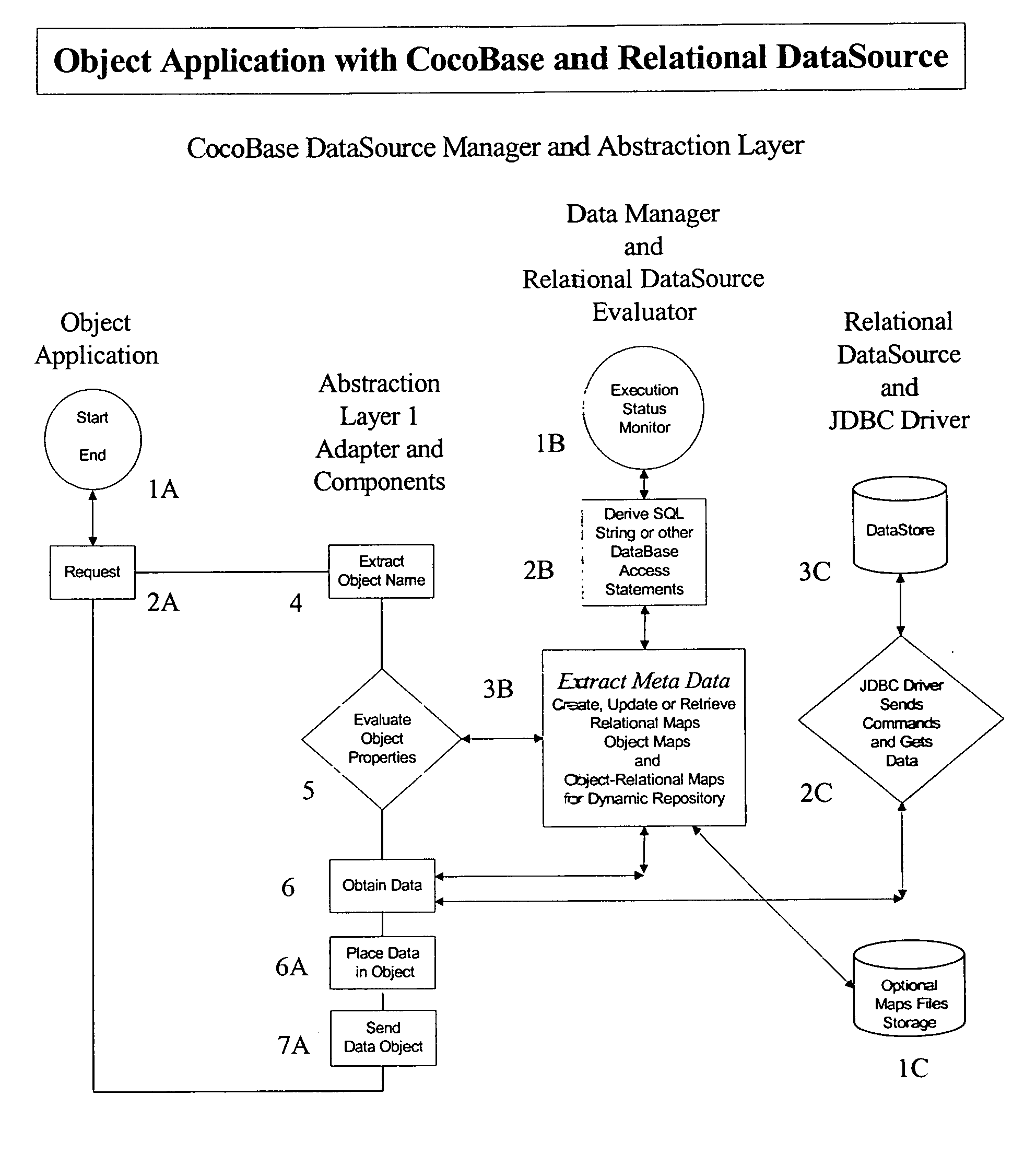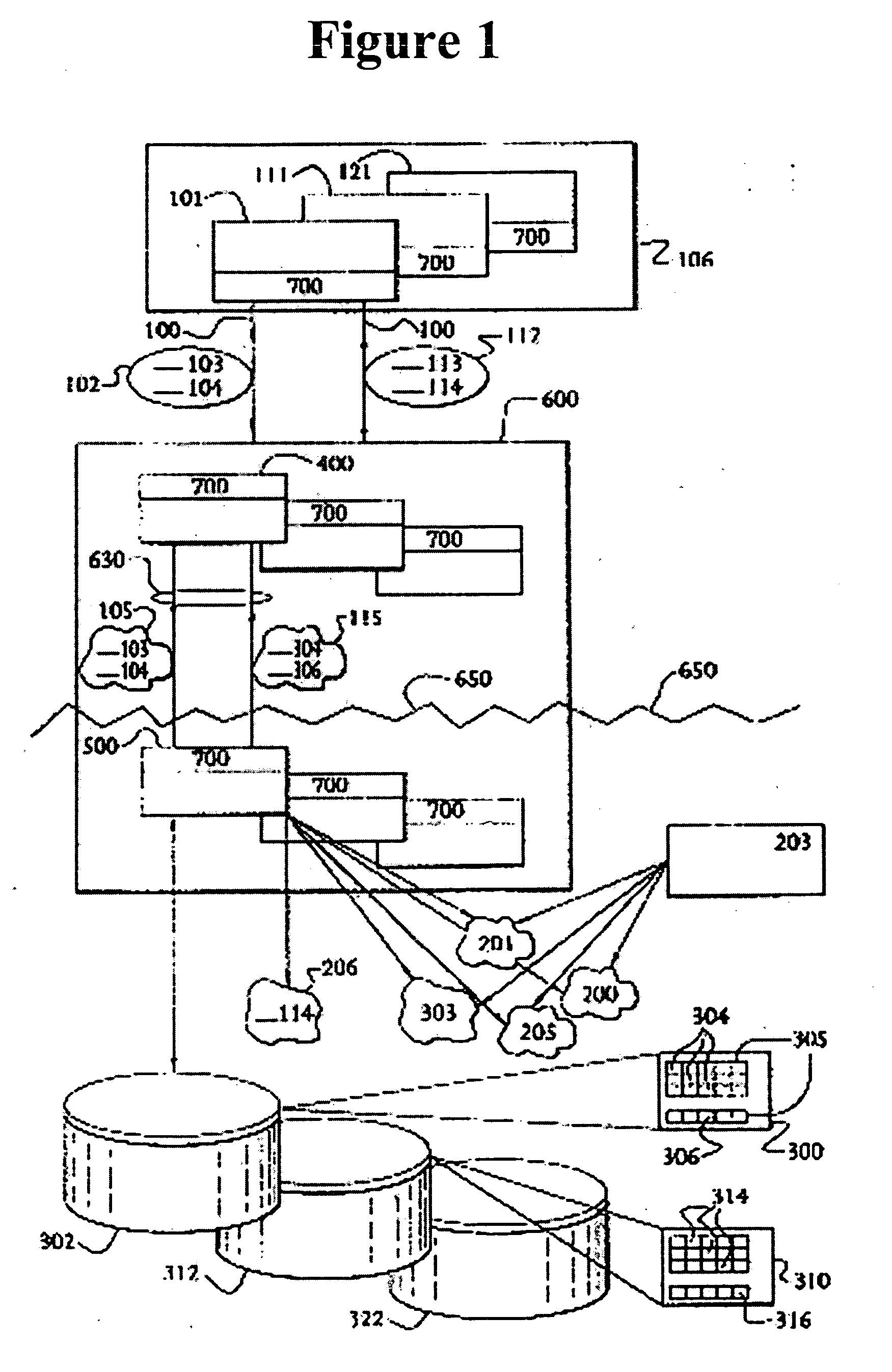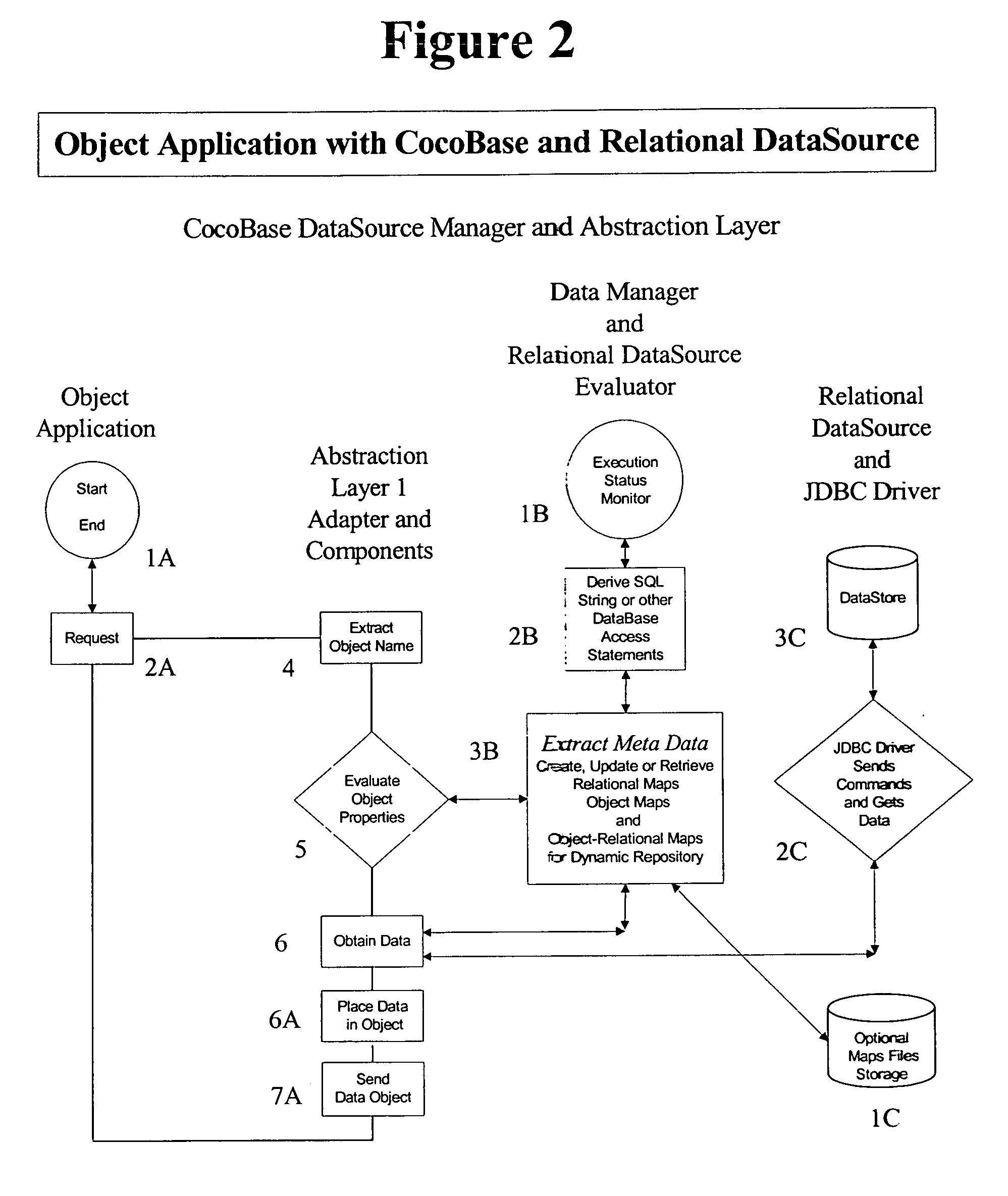Dynamic class inheritance and distributed caching with object <->relational mapping and Cartesian model support in a database manipulation and mapping system
a dynamic class and distributed caching technology, applied in the field of dynamic class inheritance and distributed caching with objects, can solve the problems of prone to errors, difficult to achieve, and difficult to achieve custom code approaches,
- Summary
- Abstract
- Description
- Claims
- Application Information
AI Technical Summary
Benefits of technology
Problems solved by technology
Method used
Image
Examples
Embodiment Construction
[0103] The present invention is based in part on U.S. Pat. No. 5,857,197, (incorporated herein by reference), and provides a mapping system for handling data requested by an object software application model in a manner that is compatible with relational data stores. A dynamic repository-based mapping system is used. The system does not put all of the data access code in java objects, for example metadata (data about java objects including complex java objects that have relationships with other java objects) does not need to be stored in a java object. Instead, the mapping information related to object definitions and some metadata can be placed in a separate structure that is independently stored. This allows the mapping information and associated metadata to be easily accessed, changed and used to convert thousands of lines of code in a data object, as needed. Mapping information can be used to map to and from objects to relational models, objects to objects, object to COBAL or vi...
PUM
 Login to View More
Login to View More Abstract
Description
Claims
Application Information
 Login to View More
Login to View More - R&D
- Intellectual Property
- Life Sciences
- Materials
- Tech Scout
- Unparalleled Data Quality
- Higher Quality Content
- 60% Fewer Hallucinations
Browse by: Latest US Patents, China's latest patents, Technical Efficacy Thesaurus, Application Domain, Technology Topic, Popular Technical Reports.
© 2025 PatSnap. All rights reserved.Legal|Privacy policy|Modern Slavery Act Transparency Statement|Sitemap|About US| Contact US: help@patsnap.com



